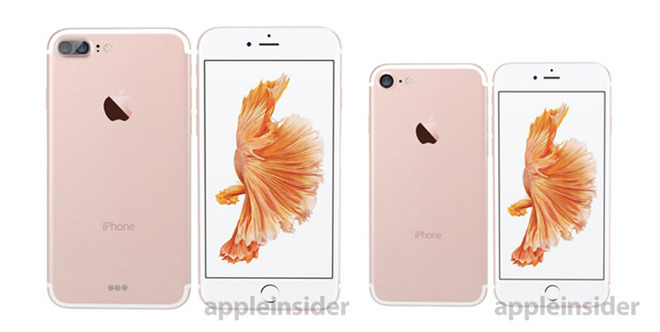This year's iPhone upgrades will be more spacious than ever, according to a new report, which claims Apple is "certain" to increase the maximum storage size to a whopping 256 gigabytes.
Research firm TrendForce reported on Wednesday that Apple has "settled on most of the specs for the next iPhone." Most of the details they shared have already been reported, including 3 gigabytes of RAM exclusive to the larger 5.5-inch "iPhone 7 Plus."
But the report did reveal that Apple apparently plans to offer a new, high-end 256-gigabyte capacity for this year's iPhone upgrade. In addition, the 256-gigabyte option will reportedly be available for both the "iPhone 7" and the larger Plus variant.
While TrendForce believes the 256-gigabyte option is a certainty, the rest of the capacity options may not yet be finalized. Wednesday's report indicated that Apple is still unsure whether to discontinue the 64-gigabyte capacity and replace it with the 128-gigabyte version. Currently, the iPhone lineup maxes out at 128 gigabytes.
The decisions have apparently been helped by a steep drop in the price of NAND flash since the second half of 2015.
Separately, IHS analyst Kevin Wang posted on Sina Weibo this week, claiming that the new entry-level capacity for the "iPhone 7" will be 32 gigabytes, ditching the 16-gigabyte storage level. However, the fact that Wang posted his scoop on social media, and did not publish it in an IHS report, makes the claims more suspect.
TrendForce, meanwhile, made no mention of the entry-level model's capacity.
It did, however, reaffirm that only the 5.5-inch "iPhone 7 Plus" will gain Apple's new dual-lens camera design. That's consistent with earlier reports suggesting the smaller 4.7-inch model will retain a single-lens camera.
Aside from those changes, the research firm expects that the "iPhone 7" series will look largely identical to its predecessors, the iPhone 6s and iPhone 6. Most notably, Apple is expected to stick with the same LCD panel technology this year, before upgrading to an OLED display in 2017.
Given the lack of a major external redesign, TrendForce believes iPhone production for 2016 will reach 216.5 million units. If accurate, that would be an 8.2 percent decrease from 2015.
 Neil Hughes
Neil Hughes








-m.jpg)






 Marko Zivkovic
Marko Zivkovic
 Christine McKee
Christine McKee
 Andrew Orr
Andrew Orr
 Andrew O'Hara
Andrew O'Hara
 William Gallagher
William Gallagher

 Mike Wuerthele
Mike Wuerthele
 Bon Adamson
Bon Adamson


-m.jpg)



38 Comments
32 > 128 > 256 would be awesome. But Phil Schiller loves upselling so I'm sure there's a catch somewhere.
Plenty of headroom on my 128, I imagine you'd need to be an HD video fanatic to come close to filling 256.
I don’t know anyone with a 16GB iPhone that uses it beyond the basics that doesn’t have to manage space by deleting things all the time. I tell people: buy the 32GB model if you are going to use it for more than just stock apps. Those deciding to ignore that advice to save a bit of cash always regret it, and complain about having to pick and chose apps or music or pictures. It’s time Apple ditch the 16GB models since iOS and its bundled apps use up about half the space on the devices. They probably should have done this when they released the 6 and kept the same price points, especially considering NAND memory is now <$25 per 64GB for consumer flash memory cards. At large volumes, Apple probably saves less than $10 using 16GB instead of 32GB NAND.
But Apple has no real impetus to push the envelope as long as all their competitors are struggling to keep up with iOS device performance, timely upgrades & device compatibility. To me it’s a squandered opportunity, but while it might be “money saving,” Apple really doesn’t need to save money more than they need to lead in minimum storage capacity.